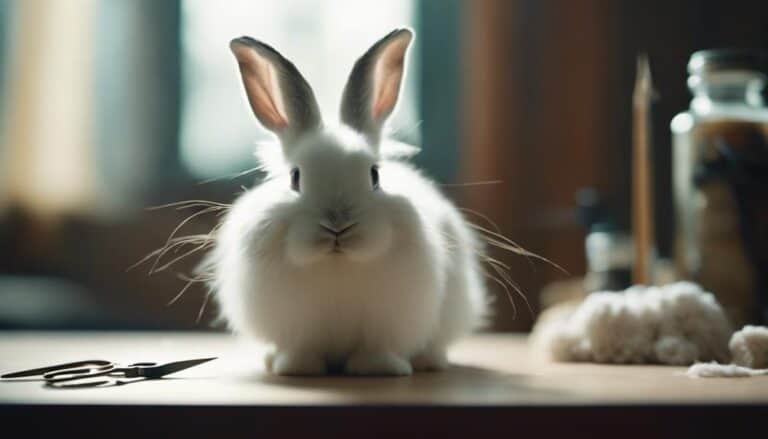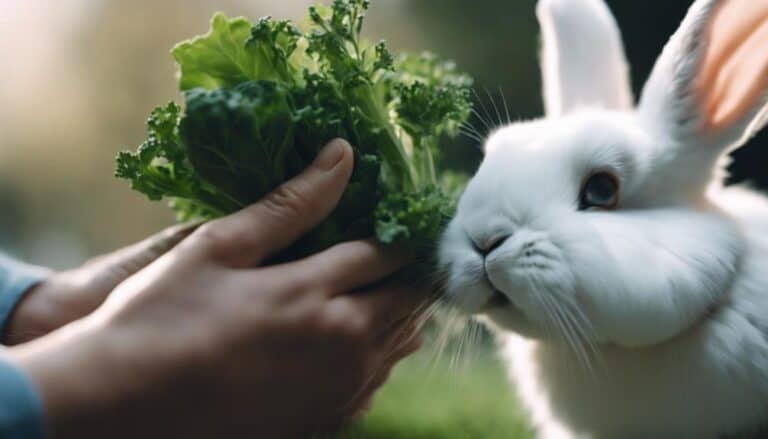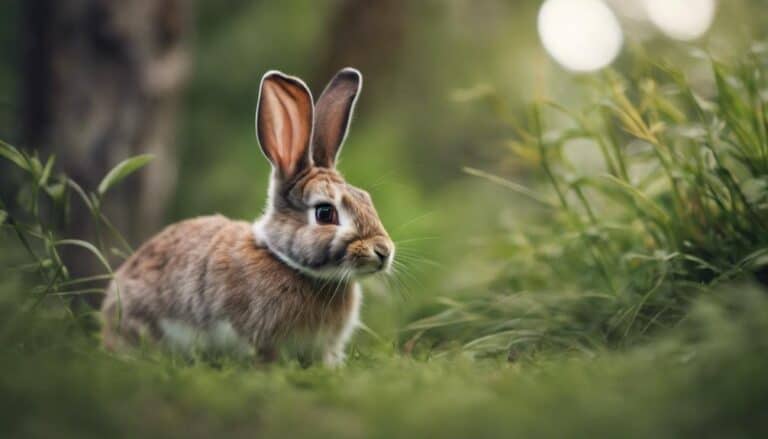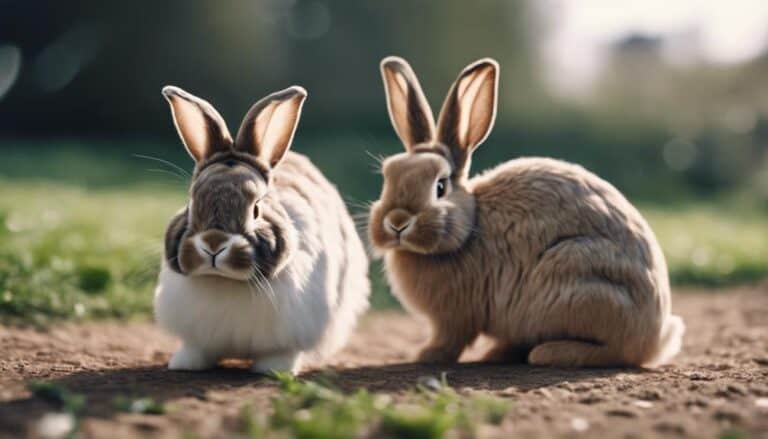You may have wondered about the peculiar behavior of bunnies when it comes to managing their body temperature. Have you ever observed your furry friend exhibiting unusual respiratory patterns?
The mystery around whether bunnies pant like other animals is a fascinating topic worth exploring. Understanding how rabbits regulate their breathing could provide valuable insights into their well-being and care.
Contents
- 1 Key Takeaways
- 2 Rabbit Breathing Patterns
- 3 Understanding Rabbit Respiration
- 4 Signs of Overheating in Rabbits
- 5 Preventing Heat Stress in Bunnies
- 6 Cool Down Techniques for Rabbits
- 7 Monitoring Rabbit's Body Temperature
- 8 Rabbit Heatstroke Symptoms
- 9 Respiratory Behavior in Rabbits
- 10 Rabbit Panting Behavior Explained
- 11 Frequently Asked Questions
- 12 Conclusion
Key Takeaways
- Panting in rabbits is essential for cooling and heat dissipation.
- Monitoring panting behavior helps gauge comfort and health status.
- Rabbits pant due to heat stress or respiratory distress.
- Lack of sweat glands in rabbits requires alternative cooling methods like panting.
Rabbit Breathing Patterns
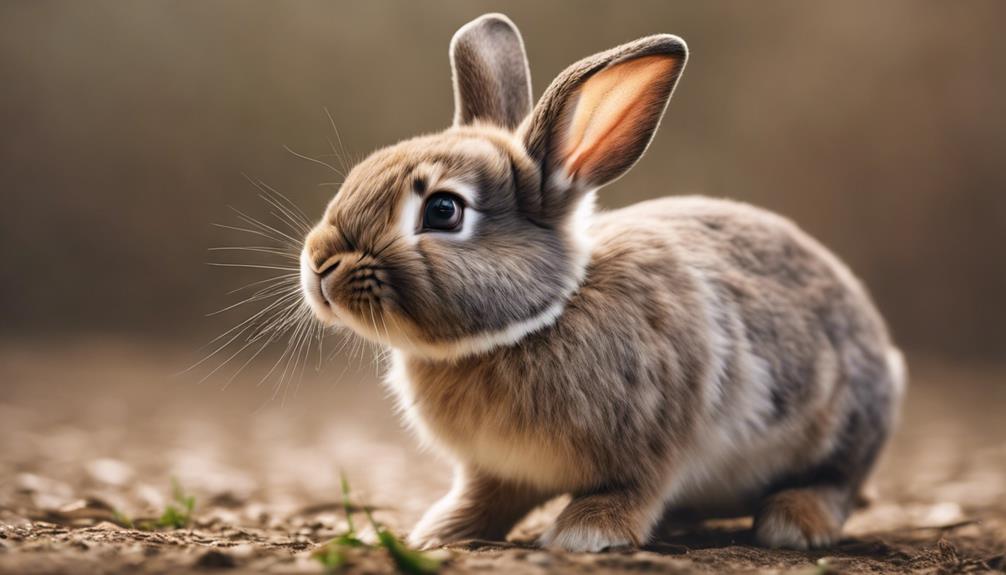
When observing rabbit breathing patterns, it's essential to understand that rabbits don't pant like dogs; instead, they regulate their body temperature through their ears. Rabbits have a unique way of staying cool by using their large, thin ears to dissipate heat. Blood vessels in the ears dilate to release excess heat, helping to maintain their body temperature. By monitoring a rabbit's ears, one can often gauge their comfort level and overall health status.
The ability of rabbits to regulate body temperature through their ears is a fascinating adaptation. Unlike other animals that rely on panting, rabbits have evolved this efficient method to stay cool. During hot weather or when stressed, a rabbit may increase the blood flow to their ears, making them appear redder. Understanding this behavior can help you make sure your rabbit's environment is suitable and comfortable.
Understanding Rabbit Respiration
When observing a rabbit's breathing, pay attention to their unique cooling mechanism through ear blood flow and recognize that panting is abnormal and could signal distress.
Understanding the signs of respiratory distress, such as rapid breathing, stress, or illness, is essential for monitoring your rabbit's health.
Keeping their lungs healthy is vital for their overall well-being, so be vigilant and seek veterinary care promptly if you notice any concerning breathing patterns.
Rabbit Breathing Mechanism
Rabbit respiration, characterized by a rapid breathing rate of 30-60 breaths per minute at rest, plays an important role in regulating their body temperature.
- Efficient Cooling Mechanism: Rapid breathing helps rabbits release excess heat from their bodies.
- Oxygen Exchange: The fast breathing rate guarantees an adequate supply of oxygen for the rabbit's metabolic needs.
- Indicator of Health: Monitoring changes in breathing patterns can give insight into a rabbit's well-being.
Understanding how rabbits breathe is essential in caring for them properly. By paying attention to their breathing rate and patterns, you can ensure they're comfortable and healthy.
Signs of Respiratory Distress
Respiratory distress in rabbits presents telltale signs that demand immediate attention and understanding to guarantee their well-being. When a rabbit is experiencing respiratory issues, watch out for open-mouth breathing, rapid breathing, and wheezing. These signs indicate potential problems that could be caused by stress, infections, dental issues, or heart disease.
It's important to act swiftly and seek veterinary care if you observe any of these symptoms. Pay attention to changes in your rabbit's breathing rate and behavior, as early detection is key in addressing respiratory problems effectively. By monitoring your rabbit closely and responding promptly to signs of illness, you can help maintain their lung health and overall well-being.
Importance of Healthy Lungs
Observing a rabbit's breathing habits provides valuable insights into the importance of their respiratory system and the significance of healthy lungs in maintaining their overall well-being.
- Healthy lungs are essential for rabbits due to their high metabolic rate and need for efficient oxygen exchange.
- Rabbit respiration involves rapid breathing to release excess body heat, especially in warm conditions.
- Monitoring rabbit breathing rates can help detect respiratory issues early for prompt veterinary care.
Taking care of your rabbit's lungs is critical for their well-being. Guarantee a clean and dust-free environment to support healthy lung function. Regularly observe their breathing patterns to catch any potential problems early. By prioritizing your rabbit's respiratory health, you can help them lead a happy and active life.
Signs of Overheating in Rabbits
Panting in bunnies is a clear indicator of potential overheating, signaling their attempt to regulate body temperature. When a rabbit's body temperature rises above the normal range of 101-103°F, panting may occur as a way to cool down. This behavior isn't typical for rabbits and should be taken seriously as it could lead to heatstroke, a severe condition that can be life-threatening.
Alongside panting, watch out for other signs of overheating such as lethargy, drooling, and redness in the ears. If you observe your rabbit panting excessively or displaying these symptoms, it's important to act promptly to prevent heat-related complications. Providing a cooler environment, access to fresh water, and even dampening your rabbit's ears gently can help lower their body temperature.
Preventing Heat Stress in Bunnies

To guarantee the well-being of your bunny during hot weather, establishing a cool and well-ventilated environment with access to shade is crucial in preventing heat stress.
Here are some key points to keep your bunny cool in the summer:
- Shade: Make sure your bunny has a shady area to retreat to when the sun is at its peak.
- Ventilation: Proper airflow is essential to prevent heat buildup in your bunny's living space.
- Hydration: Keep your bunny's water bottle filled with fresh, cool water at all times to help regulate body temperature.
Cool Down Techniques for Rabbits
When rabbits are feeling overheated, they utilize various cooling techniques to regulate their body temperature effectively. In hot weather, it's essential to help your rabbits cool down. Rabbits don't pant like dogs; instead, they release heat through their ears and feet.
To aid in their cooling process, wetting a rabbit's ears can be highly effective. Offering frozen water bottles or ceramic tiles for them to lay on also helps in dissipating heat. It's vital to remember that submerging rabbits in cold water can lead to shock. Instead, opt for gentle cooling methods such as misting their ears with water.
Monitoring Rabbit's Body Temperature
Rabbits, being unable to sweat, rely on alternative methods to regulate their body temperature effectively. Monitoring a rabbit's body temperature is essential for detecting signs of hyperthermia. When it comes to your furry friend, keeping an eye on their body temperature is important. Here are some key points to take into account:
- Panting for Cooling: Rabbits regulate their body temperature through panting, a behavior that helps them cool down when they're overheated.
- Detecting Overheating: Excessive panting in rabbits can signal heatstroke or other underlying health issues. It's important to monitor their panting patterns.
- Preventive Measures: By observing your rabbit's panting behavior regularly, you can proactively prevent overheating and its associated complications.
Rabbit Heatstroke Symptoms
If your rabbit is experiencing heatstroke, you may notice warning signs like excessive panting, lethargy, confusion, and rapid breathing. These symptoms indicate that your rabbit is struggling to regulate its body temperature and could be in serious danger.
Immediate treatment for heatstroke, such as moving your rabbit to a cool area, providing water, and contacting a veterinarian, is vital to prevent organ damage and potential death.
Heatstroke Warning Signs
Panting serves as an important indicator of heatstroke in rabbits, signaling their attempt to regulate body temperature through rapid breathing. When caring for your furry friend, keep an eye out for these critical warning signs:
- Excessive lethargy
- Confusion or disorientation
- Weakness in movement
Recognizing these symptoms promptly can make a significant difference in your rabbit's well-being. Remember, heatstroke is a serious condition that requires immediate attention to prevent further complications.
Stay vigilant, especially during hot weather or in high humidity, and seek veterinary assistance if you notice any of these signs in your rabbit. Your quick action could save their life.
Treatment for Heatstroke
Upon noticing symptoms of heatstroke in your rabbit, immediate action is essential to provide appropriate treatment and prevent further complications. If your rabbit is panting, confused, or lethargic due to heatstroke, dampen its fur and ears with cool water. This will help lower its body temperature. It's important to avoid submerging the rabbit in cold water to prevent shock.
Additionally, seek prompt veterinary attention for proper evaluation and care. Heatstroke can be a serious condition, so quick intervention is necessary. By acting swiftly and utilizing cool water to help regulate your rabbit's temperature, you can aid in its recovery. Remember, always prioritize your rabbit's well-being and seek professional help when needed.
Respiratory Behavior in Rabbits
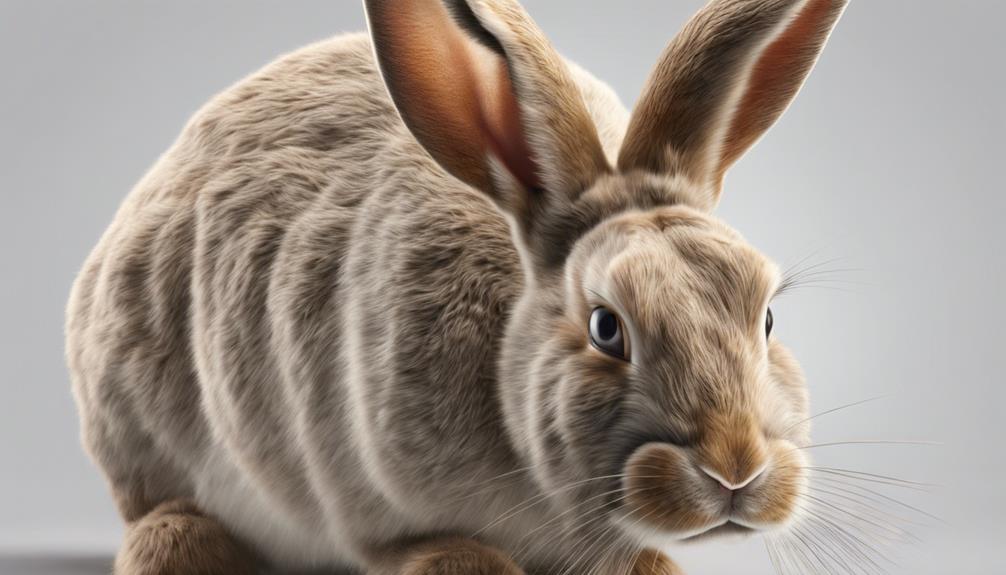
When observing respiratory behavior in rabbits, it becomes evident that panting serves as an important mechanism for regulating their body temperature. Here are some key points to take into account:
- Panting in rabbits is a critical heat regulation and cooling mechanism.
- Unlike dogs, rabbits pant less heavily and usually exhibit mild panting when overheated or stressed.
- Since rabbits have limited ability to sweat, panting plays an essential role in helping them cool off in hot environments.
Rabbits rely on panting to dissipate excess heat and maintain a comfortable body temperature. Monitoring their panting behavior can offer valuable insights into their well-being and help identify any potential heat-related issues they may be experiencing. Being attentive to your rabbit's respiratory patterns can aid in ensuring their comfort and health, especially during warmer weather or stressful situations.
Rabbit Panting Behavior Explained
Rabbits exhibit a unique cooling mechanism through their ears, which plays an important role in regulating their body temperature. Panting in rabbits isn't a normal behavior; it can signal overheating or stress. Since rabbits lack sweat glands, they rely on other methods to cool down.
Panting may occur due to heat stress, high humidity, or respiratory issues. If you notice your rabbit panting, it's important to cool them down gradually. Provide a cooler environment with proper ventilation to help prevent heat stress. Monitoring your rabbit's behavior and surroundings is essential for their well-being.
If panting persists, seek veterinary attention promptly. Understanding the reasons behind rabbit panting can help you take proactive steps to make sure your furry friend stays healthy and comfortable. Remember, being attentive to your rabbit's needs can make a significant difference in preventing heat-related problems.
Frequently Asked Questions
What Does It Mean When Bunnies Pant?
When bunnies pant, it's vital to pay attention. Panting can be a behavioral cue indicating stress or discomfort. By monitoring the frequency and duration of panting, you can assess your bunny's well-being and promptly seek veterinary attention if needed.
Is It Normal for Bunnies to Breathe Fast?
Yes, it's normal for bunnies to breathe fast at times. Rapid breathing can happen due to exercise or stress. Monitor for any signs of distress like wheezing or open-mouth breathing, which require immediate vet attention.
How Do I Know if My Rabbit Is Too Hot?
If your rabbit is too hot, watch for signs like panting, restlessness, and seeking cool spots. Prevent overheating by providing shade and cooling methods. Pay attention to behavior changes to keep your bunny safe.
Do Rabbits Sweat or Pant?
If rabbits sweat or pant, it's important to understand their cooling mechanisms. Rabbits groom to regulate temperature and avoid panting. Guarantee rabbit hydration and a suitable environment to prevent overheating and stress-induced panting, which can lead to health issues.
Conclusion
Now you know that bunnies don't pant like dogs to cool down. Instead, they use other methods such as ear movement and finding cooler areas. Remember, if you see your bunny panting, it could be a sign of overheating or a health issue. Keep a close eye on your furry friend and take steps to cool them down if needed.
Did you know that rabbits have over 17,000 taste buds, making them very selective eaters?

